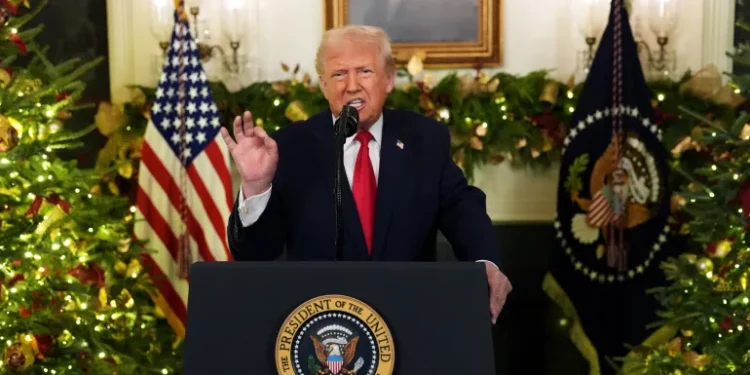The Monetary Policy Rate (MPR) cut announced by the Bank of Ghana marks a turning point for the economy, according to the IMANI Center for Policy and Education.
The policy think tank noted that last week’s 300-basis-point reduction to 25.0 percent is the most aggressive single cut since July 2024 and March 2018, signalling renewed confidence in Ghana’s disinflation path and macroeconomic stability.
“The MPR cut was propelled by a significant fall in headline inflation, which dipped to 13.7 percent in June 2025—the lowest since December 2021—down from a peak of 54 percent at the end of 2022.
“Tight monetary policy, improved food supply conditions, and a stronger cedi all contributed to the disinflation trend, reinforcing the Committee’s view that conditions can safely accommodate lower borrowing costs.”
IMANI Center for Policy and Education
Short-term money market rates have also fallen sharply, reducing the cost of government borrowing and signalling wider financial easing.
Despite ongoing global headwinds—including geopolitical tensions, trade disputes, and anticipated utility tariff adjustments—IMANI said domestic indicators were strong enough to justify a major shift in policy.
“A glance at historical policy rates underscores the dramatic shift,” the think tank observed, recalling how the MPR reached a record high of 29.50 percent in May 2023 before trending down to the current 25 percent.
The reduction, IMANI added, reverses much of the steep hiking cycle of 2022–23 and is in line with the Bank of Ghana’s medium-term inflation target of “8 ± 2 percent by year’s end.”
Lower benchmark rates are expected to filter through to commercial bank lending, with the Average Lending Rate (ALR) already dropping from 30.75 percent in January to 27.0 percent in June—an overall decline of 375 basis points.

However, IMANI cautioned that the pass-through from policy cuts to lending rates often takes time, influenced by banks’ funding costs, liquidity positions, and provisions for non-performing loans.
Banks, the think tank explained, generally use the policy rate as a ceiling, adding margins based on credit risk and funding costs.
They also consider Treasury bill and interbank rates, cost of funds, operational overheads, and a risk premium derived from the “Five Cs” of lending: character, capacity, capital, collateral, and conditions.
This means the MPR serves as a baseline, but actual borrowing costs remain dependent on borrower profiles and market conditions.
Credit Market Reform Amid Monetary Policy Rate Cut Adds to Optimism
In addition to the rate cut, IMANI welcomed the Bank of Ghana’s expansion of its licensing regime to include three credit-reference bureaus—Dun & Bradstreet, MyCredit Score, and XDS Data.
This marks the establishment of a unified credit information framework in Ghana, a move the think tank said would improve market transparency and address the long-standing need for reliable debt market data.

“With independent, rigorously verified credit reports, financial institutions can more accurately assess default risk,” IMANI noted, adding that the change should eventually lower financing costs for creditworthy borrowers and help deepen the corporate bond market.
The positive inflation trend has continued, with July’s headline rate dropping further to 12.1 percent, the lowest since October 2021 and the seventh straight monthly decline. On a monthly basis, however, prices still rose by 0.7 percent, showing that some short-term pressures remain.
At the same time, the cedi’s appreciation—trading at around GHS 10.50 per USD by the end of July, compared to over GHS 15.50 in March—has prompted banks to review hedging strategies, especially as Treasury bill yields continue to fall.
For businesses, IMANI argued, the MPR cut presents opportunities for cheaper short-term financing, more flexible working capital arrangements, and improved cash flow management.
Lower borrowing costs can make overdrafts, inventory financing, and project loans more affordable, supporting expansion and easing liquidity constraints.
However, the benefits will depend on both the willingness of banks to adjust their rates promptly and the creditworthiness of firms seeking funding.
“Beyond headline rate adjustments, the interplay between inflation, exchange rates, credit infrastructure, and bank lending practices will define Ghana’s growth trajectory in the latter half of 2025.”
IMANI Center for Policy and Education

The think tank urged businesses to reassess financing strategies in light of the rate cut, seeking opportunities to refinance at lower costs, renegotiate loan terms, and prioritise investments with medium-term returns.
Strengthening credit profiles—through better financial disclosure and improved collateral—will be essential to take full advantage of the new credit rating systems.
IMANI also advised firms to adopt prudent hedging strategies and diversify income sources to manage currency and interest rate risks.
As the central bank signals readiness for further easing, IMANI concluded, the focus should be on how effectively the reduced Monetary Policy Rate translates into real gains for businesses and households.
The sustainability of disinflation, currency stability, and credit market reforms will be key to ensuring that this bold shift in monetary policy delivers lasting economic benefits.
READ ALSO: Kafui Danku Questions Nigerian Piracy Claims























